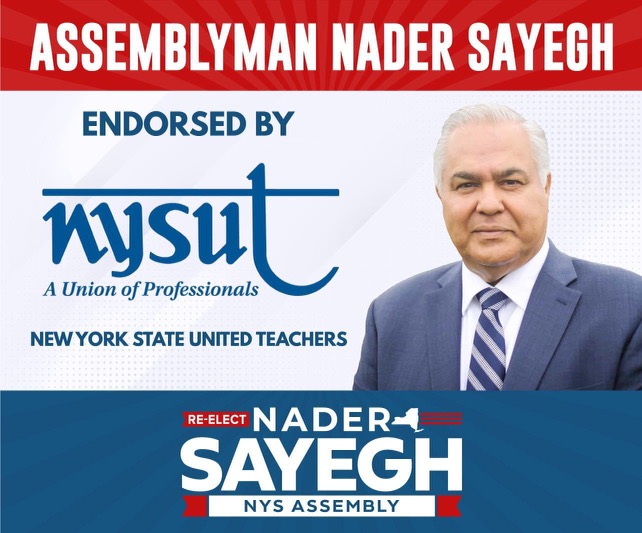
Op-Ed by Assemblyman Nader Sayegh
Ensuring that our children receive a quality education is one of the most important responsibilities we have as public servants. In New York State, education is the cornerstone of our future, yet the current funding system does not reflect the realities our schools face today. The formula used to calculate state aid to our schools is based on data from the 2000 Census – an outdated system that is now 14 years behind in addressing the needs of our communities.
As an Educator in the Yonkers Public School system for more than 40 years and now an Assemblymember, I’ve seen firsthand the challenges our schools face. Whether it’s the need for new infrastructure, modernized classrooms, or simply adequate resources, Yonkers Public Schools and many other districts are being left behind by a formula that no longer accurately reflects their needs. It is time we recognize that every student in New York State deserves a fair shot at success, and that starts with a fair funding system.
I have been in discussions with educational leaders, including the President of SUNY Rockefeller, Robert Megna, who understand the critical nature of this issue. One of the key points in our discussions was the importance of the Foundation Aid study currently being conducted by the school. This study, approved by the State Legislature and which I was proud to vote for, is crucial to ensuring that the next iteration of state education funding will be equitable and forward-looking. It must consider the real-world needs of school districts like here in Yonkers, where funding gaps have created a significant strain.
The Census date from 2000 no longer reflects the growth, demographic changes, and new challenges facing our communities today. Not a single child from Pre-K to Grade 12 was counted in the 2000 Census, yet this data determines how much their school district received in terms of Foundation Aid. Yonkers went from being the 4th largest city in the State to the 3rd largest. Our schools now serve more students from diverse backgrounds, many of whom require additional support, such as English Language Services or Special Education.
At the heart of this issue is the promise of equal opportunity. Every child in New York, regardless of where they live or their family’s income, deserves a quality education. The current funding formula is failing too many of our children by not accounting for the dramatic changes that have taken place in the last two decades. We need to build a new system that recognizes these changes and ensures that state aid is distributed based on up-to-date, accurate information.
I have introduced several pieces of legislation that would help fix this issue, one of which is my bill, A67/S5451, the Education Funding Census Update Act. This bill updates the census numbers used to calculate State Education Funding from the 2000 Census presently used to the “most recent federal decennial census.” Other education bills I introduced A96/S4437, which relates to the apportionment of funds for Capital Outlays and Debt Service for school building purposes. This will greatly aid in the renovation of old schools and the building of new ones. My bill, A103, increases Foundation Aid for school districts that meet five variables and percentages impacting funding and academic success: Free or Reduced Lunch, English Language Learners, Enrollment, Special Education, and the Wealth Ratio of the region the school district is located.
The Foundation Aid study provides an opportunity to right this wrong. By understanding where the gaps are and how needs have evolved, we can create a new funding formula that is based on fairness and equity. We must prioritize districts like Yonkers that have been historically underfunded, and ensure that all schools have the resources they need to educate their students effectively. The lack of funding negatively impacts services students need and deserve such as music, art, sports, library and support services.
Education is the great equalizer, and it is our duty to make sure every child in New York has access to a world-class education. It is time for us to fix the outdated funding formula, invest in our schools, and give our children the future they deserve.





